Lima, Peru 作者: 来源: 发布时间:2021-03-24
1. Population and Area
Lima is the capital and the largest city of Peru. Together with the seaport of Callao, it forms a contiguous urban area known as the Lima Metropolitan Area. With a population of more than 9 million, Lima is the most populous metropolitan area of Peru and the seventh-largest metropolitan area in the Americas.

Population: 8,852,000(2017)
Area: Urban: 800 km2 (300 sq mi)
City: 2,672.3 km2 (1,031.8 sq mi)
Location: It is located in the valleys of the Chillón, Rímac and Lurín rivers, in the central coastal part of the country, overlooking the Pacific Ocean.
2. Geography
The urban area covers about 800 km2 (310 sq mi). It is located on mostly flat terrain in the Peruvian coastal plain, within the valleys of the Chillón, Rímac and Lurín rivers. The city slopes gently from the shores of the Pacific Ocean into valleys and mountain slopes located as high as 1,550 meters (5,090 ft) above sea level. Within the city are isolated hills that are not connected to the surrounding hill chains, such as El Agustino, San Cosme, El Pino, La Milla, Muleria and Pro hills. The San Cristobal hill in the Rímac District, which lies directly north of the downtown area, is the local extreme of an Andean hill outgrowth.
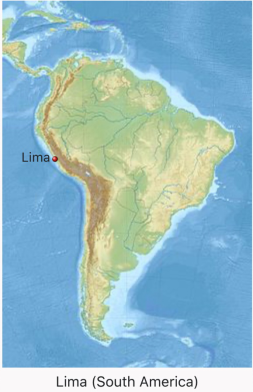
Metropolitan Lima covers 2,672.28 km2 (1,031.77 sq mi), of which 825.88 km2 (318.87 sq mi) (31%) comprise the actual city and 1,846.40 km2 (712.90 sq mi) (69%) the city outskirts. The urban area extends around 60 km (37 mi) from north to south and around 30 km (19 mi) from west to east. The city center is located 15 km (9.3 mi) inland at the shore of the Rímac River, a vital resource for the city, since it carries what will become drinking water for its inhabitants and fuels the hydroelectric dams that provide electricity to the area. While no official administrative definition for the city exists, it is usually considered to be composed of the central 30 of 43 districts of Lima Province, corresponding to an urban area centered around the historic Cercado de Lima district. The city is the core of the Lima Metro Area, one of the ten largest metro areas in the Americas. Lima is the world's third largest desert city, after Karachi, Pakistan and Cairo, Egypt.
Transportation
Air
Lima is served by Jorge Chávez International Airport, located in Callao (LIM). It is the country's largest airport hosting the largest number of domestic and international passengers. It serves as the fourth-largest hub in the Latin American air network. Lima possesses five other airports: the Las Palmas Air Force Base, Collique Airport and runways in Santa María del Mar, San Bartolo and Chilca.
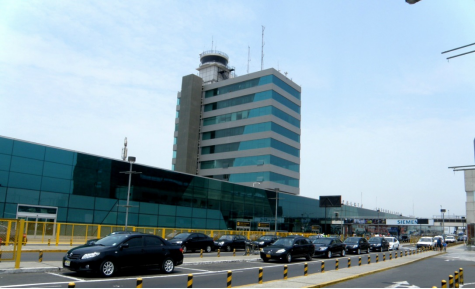
Jorge Chávez International Airport
Road
Lima is a major stop on the Pan-American Highway. Because of its location on the country's central coast, Lima is an important junction in Peru's highway system. Three major highways originate in Lima.
1) The Northern Panamerican Highway extends more than 1,330 kilometers (830 mi) to the border with Ecuador connecting the northern districts and with many major cities along the northern Peruvian coast.
2) The Central Highway (Spanish: Carretera Central) connects the eastern districts and with cities in central Peru. The highway extends 860 kilometers (530 mi) with its terminus at the city of Pucallpa near Brazil.
3) The Southern Panamerican Highway connects the southern districts and to cities on the southern coast. The highway extends 1,450 kilometers (900 mi) to the border with Chile.
The city has one big bus terminal next to the mall Plaza Norte. This bus station is the point of departure and arrival point for national and international destinations. Other bus stations serve private bus companies around the city. In addition, informal bus stations are located in the south, center and north of the city.
Maritime
Lima's proximity to the port of Callao allows Callao to act as the metropolitan area's major port and one of Latin America's largest. Callao hosts nearly all maritime transport for the metropolitan area. A small port in Lurín serves oil tankers due to a nearby refinery. Maritime transport inside Lima city limits is relatively insignificant compared to that of Callao.

The Port of Callao
Rail
Lima is connected to the Central Andean region by the Ferrocarril Central Andino which runs from Lima through the departments of Junín, Huancavelica, Pasco and Huánuco. Major cities along this line include Huancayo, La Oroya, Huancavelica and Cerro de Pasco. Another inactive line runs from Lima northwards to the city of Huacho. Commuter rail services for Lima are planned as part of the larger Tren de la Costa project.
Metro
The Lima Metro has twenty six passenger stations, located at an average distance of 1.2 km (0.7 miles). It begins in the Industrial Park of Villa El Salvador, south of the city, continuing on to Av. Pachacútec in Villa María del Triunfo and then to Av. Los Héroes in San Juan de Miraflores. Afterwards, it continues through Av. Tomás Marsano in Surco to reach Ov. Los Cabitos, to Av. Aviación and then cross the river Rimac to finish, after almost 35 km (22 mi), in the east of the capital in San Juan de Lurigancho. The system operates 24 trains, each with six wagons. Each wagon has the capacity to transport 233 people. The metro system began operating in December 2012 and transported 78,224 people on average on a daily basis.
Lima Metro
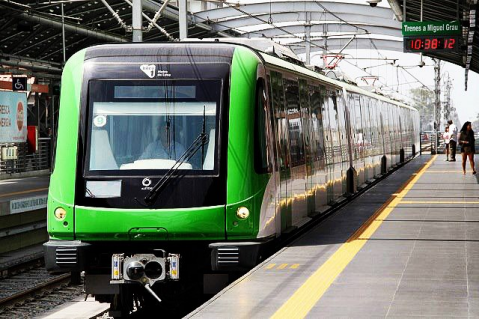
Metropolitan Transport System
The Metropolitan Transport System or El Metropolitano is a new, integrated system, consisting of a network of buses that run in exclusive corridors under the Bus Rapid Transit system (BST). The goal is to reduce passengers' commute times, protect the environment, provide improved security and overall quality of service. Metropolitano was executed with funds from the City of Lima and financing from the Inter-American Development Bank and the World Bank. Metropolitana is the first BRT system to operate with natural gas, seeking to reduce air pollution. This system links the principal points of the Lima Metropolitan Area. The first phase of this project has 33 kilometres (21 mi) of line (north) to Chorrillos (south). It began commercial operations on 28 July 2010. Since 2014, Lima Council operates the "Sistema Integrado de Transporte Urbano" (Urban integrated transport system), which comprises buses over Avenida Arequipa. By the end of 2012, the Metropolitano system counted 244 buses in its central routes and 179 buses in its feeding routes. Weekday use averages 437,148 passengers. Usage increased since 2011 by 28.2% for weekdays, 29.1% for Saturdays and 33.3% for Sundays.
3. Economy
Lima is the country's industrial and financial center and one of Latin America's most important financial centers, home to many national companies and hotels. It accounts for more than two-thirds of Peru's industrial production and most of its tertiary sector.
Industrialization began in the 1930s and by 1950, through import substitution policies, manufacturing made up 14% of GNP. In the late 1950s, up to 70% of consumer goods were manufactured in factories located in Lima.
The Callao seaport is one of the main fishing and commerce ports in South America, covering over 47 hectares (120 acres) and shipping 20.7 million tonnes of cargo in 2007. The main export goods are commodities: oil, steel, silver, zinc, cotton, sugar and coffee.
Lima produces more than two thirds of the Peruvian GDP, taxes, bank deposits, private investments, doctors and university students.
In 2007, the Peruvian economy grew 9%, the largest growth rate in South America. The Lima Stock Exchange rose 185.24% in 2006 and in 2007 by another 168.3%, making it then one of the fastest growing stock exchanges in the world. In 2006, the Lima Stock Exchange was the world's most profitable.
The Asia-Pacific Economic Cooperation Summit 2008 and the Latin America, the Caribbean and the European Union Summit were held there.
Lima is the headquarters for banks such as Banco de Crédito del Perú, Scotiabank Perú, Interbank, Bank of the Nation, Banco Continental, MiBanco, Banco Interamericano de Finanzas, Banco Financiero, Banco de Comercio and CrediScotia. It is a regional headquarters for Standard Chartered. Insurance companies based in Lima include Rimac Seguros, Mapfre Peru, Interseguro, Pacifico, Protecta and La Positiva.
4. Industries
Almost all of Peru's mayor industries are located in the Lima area.
The manufacturing industries include the production of battle tanks, truck and automobile parts and engines, metal fixtures and coatings, and chemicals.
Products include textiles, clothing and food. Chemicals, fish, leather and oil derivatives are manufactured and processed.
The financial district is in San Isidro, while much of the industrial activity takes place in the west of the city, extending to the airport in Callao. Lima has the largest export industry in South America and is a regional center for the cargo industry.
5. Tourist attractions
Huaca Pucllana
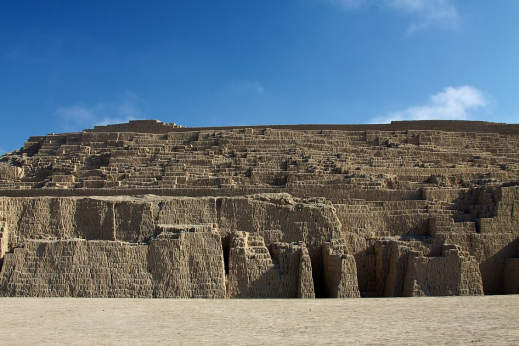
The archeological site Huaca Pucllana is a great adobe and clay pyramid located in the Miraflores district, built from seven staggered platforms. It served as an important ceremonial and administrative center for the advancement of the Lima culture.
Basílica y Convento de San Francisco
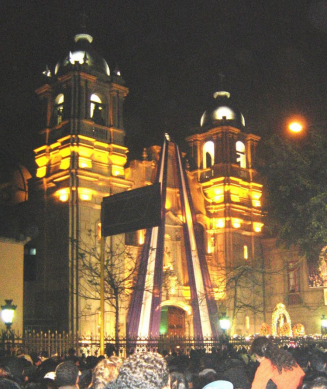
Basílica y Convento de San Francisco is the Spanish name for Saint Francis Monastery located in Lima, Peru, south of Parque la Muralla and one block northeast from the Plaza Mayor, Lima. The church and convent are part of the Historic Centre of Lima, which was added to the UNESCO World Heritage List in 1991. Aside from a church and monastery it also contains a library and catacombs. In this church, Jude the Apostle is venerated. At the feast of Saint Jude Tadeus a one and a half ton weighing silver stand is carried round in procession by 40 people, starting from the convent.
Sanctuary and Monastery of Las Nazarenas
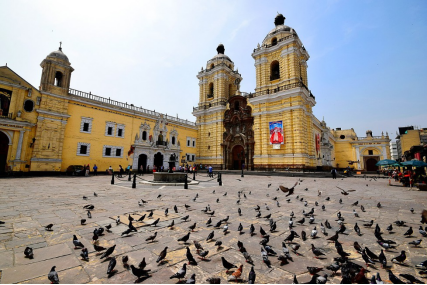
The Sanctuary and Monastery of Las Nazarenas is a church in Lima and is the site of the Peruvian Catholic procession of the Lord of Miracles, Señor de los Milagros, who is also the patron of the city. It was constructed together with the Monastery of Nazarenas in 1771, after a major earthquake in 1746. From this church begins America's most important religious procession on October 18 and 28.
6. History and culture
History
The history of Lima, the capital of Peru, began with its foundation by Francisco Pizarro on January 18, 1535. The city was established on the valley of the Rímac River in an area populated by the Ichma polity. It became the capital of the Viceroyalty of Peru and site of a Real Audiencia in 1543. In the 17th century, the city prospered as the center of an extensive trade network despite damage from earthquakes and the threat of pirates. However, prosperity came to an end in the 18th century due to an economic downturn and the Bourbon Reforms.
The population of Lima played an ambivalent role in the 1821–1824 Peruvian War of Independence; the city suffered exactions from Royalist and Patriot armies alike. After independence, Lima became the capital of the Republic of Peru. It enjoyed a short period of prosperity in the mid-19th century until the 1879–1883 War of the Pacific when it was occupied and looted by Chilean troops. After the war, the city went through a period of demographic expansion and urban renewal. Population growth accelerated in the 1940s spurred by immigration from the Andean regions of Peru. This gave rise to the proliferation of shanty towns as public services failed to keep up with the city expansion.
Culture
Strongly influenced by European, Andean, African and Asian culture, Lima is a melting pot, due to colonization, immigration and indigenous influences. The Historic Centre was declared a UNESCO World Heritage Site in 1988.
The city is known as the Gastronomical Capital of the Americas, mixing Spanish, Andean and Asian culinary traditions.
Lima's beaches, located along the northern and southern ends of the city, are heavily visited during the summer. Restaurants, clubs and hotels serve the beachgoers. Lima has a vibrant and active theater scene, including classic theater, cultural presentations, modern theater, experimental theater, dramas, dance performances and theater for children. Lima is home to the Municipal Theater, Segura Theater, Japanese-Peruvian Theater, Marsano Theater, British theater, Theater of the PUCP Cultural Center and the Yuyachkani Theater.
7. Other information
The Historic Centre of Lima was declared a UNESCO World Heritage Site in 1988.
The city is known as the Gastronomical Capital of the Americas.
Lima has been one of Beijing’s sister cities since 1983.
Internationally, it is one of the thirty most populated urban agglomerations in the world. Due to its geostrategic importance, it has been defined as a "beta" city.
8. Contact Infcormation
Mayor: Jorge Muñoz Wells
Website: http://www.munlima.gob.pe/
Facebook: @MuniLima
Tel: +511 6321300
Office address:
Jirón de la Unión 300, Jirón Conde de Superunda 141, Cercado de Lima, Peru
